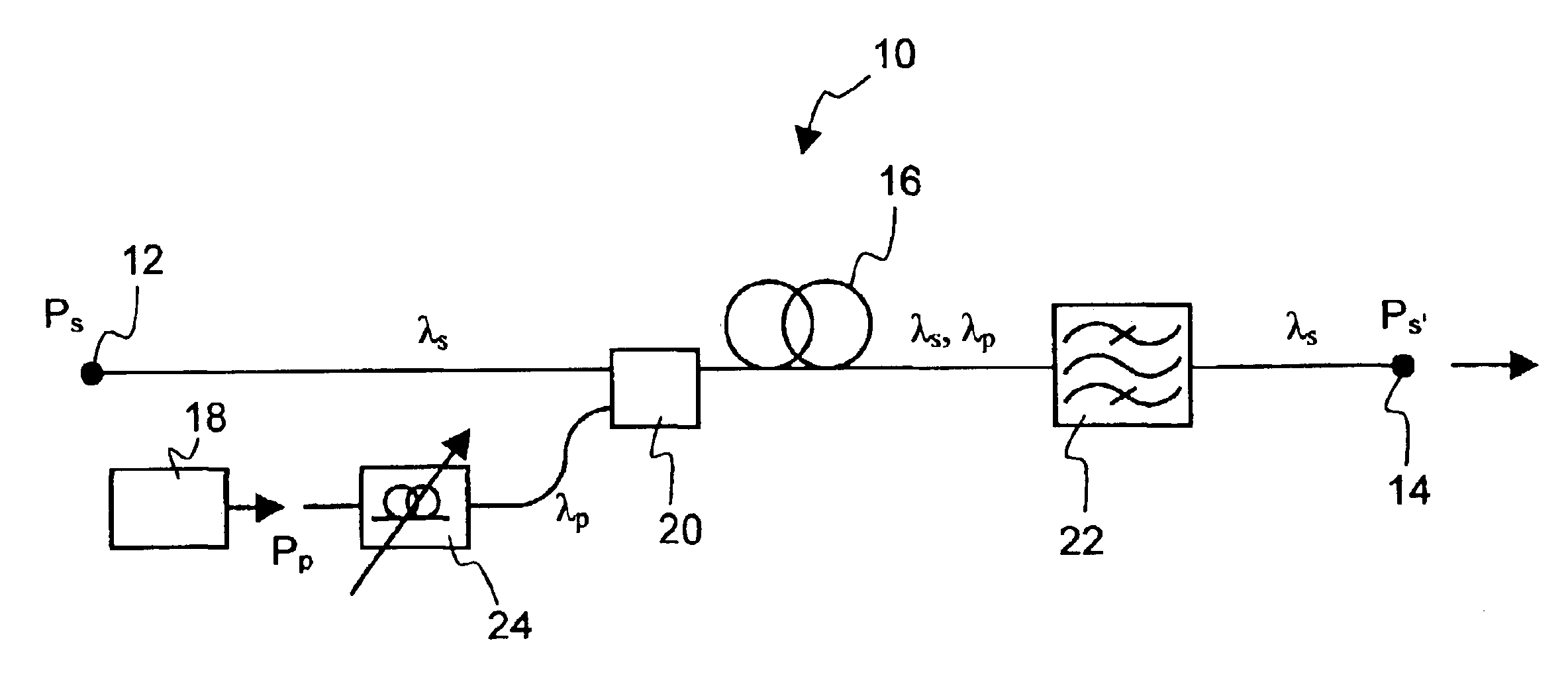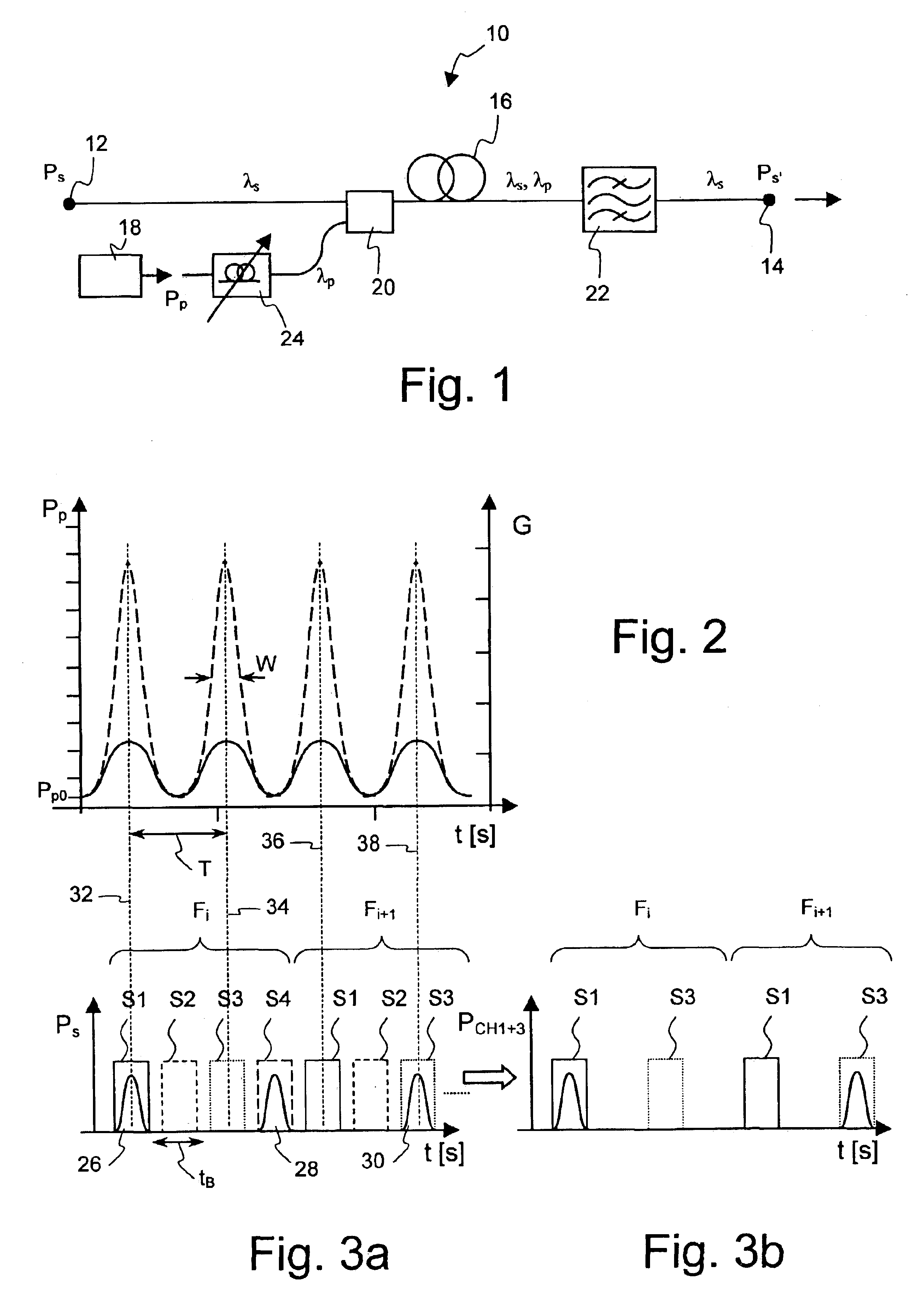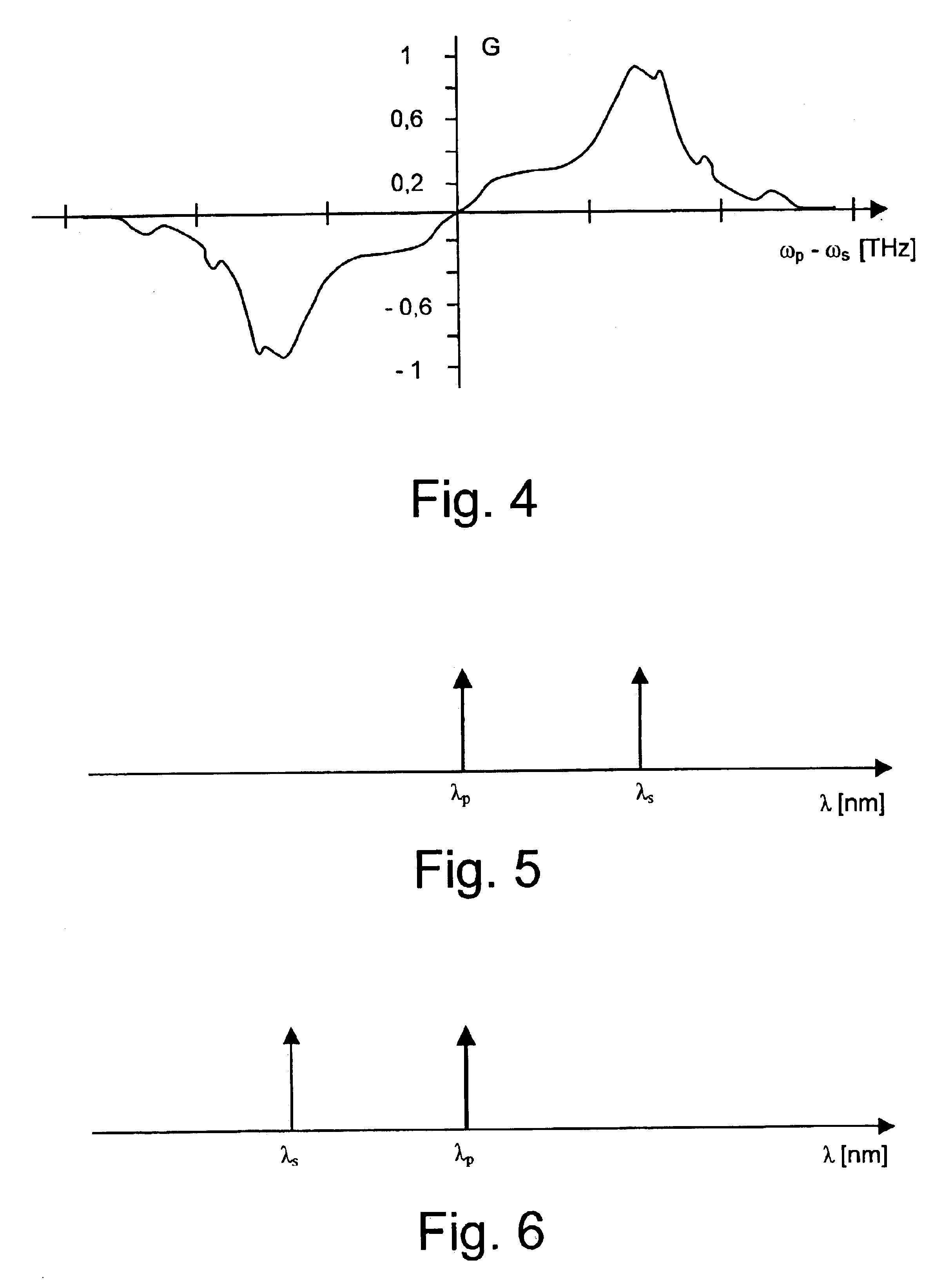Demultiplexer for optical time-division multiplexed signals
- Summary
- Abstract
- Description
- Claims
- Application Information
AI Technical Summary
Benefits of technology
Problems solved by technology
Method used
Image
Examples
Example
FIG. 1 schematically depicts a first exemplary embodiment of a demultiplexer according to the present invention, being designated in its entirety by 10. Demultiplexer 10 comprises an optical input 12 in which an optical time-division multiplexed (OTDM) digital signal Ps having a signal wavelength λs and a bit rate B can be coupled into. Demultiplexer 10 further comprises an optical output 14 at which a demultiplexed optical signal Ps′ of wavelength λs may be coupled into another optical component.
Between input 12 and output 14 a Raman active optical medium is disposed, which in this embodiment is a Raman active fiber 16 of the kind as used in Raman fiber amplifiers. The underlying physical principle of Raman amplification is the effect of stimulated Raman scattering. This is a non-linear optical process that occurs at high optical intensities and involves coupling of light propagating through the non-linear medium to vibrational modes of the medium. Amplification is caused by an ene...
PUM
 Login to View More
Login to View More Abstract
Description
Claims
Application Information
 Login to View More
Login to View More - Generate Ideas
- Intellectual Property
- Life Sciences
- Materials
- Tech Scout
- Unparalleled Data Quality
- Higher Quality Content
- 60% Fewer Hallucinations
Browse by: Latest US Patents, China's latest patents, Technical Efficacy Thesaurus, Application Domain, Technology Topic, Popular Technical Reports.
© 2025 PatSnap. All rights reserved.Legal|Privacy policy|Modern Slavery Act Transparency Statement|Sitemap|About US| Contact US: help@patsnap.com



